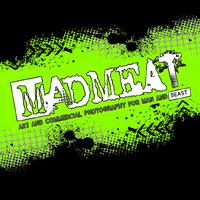“Glassworks” =’s Dance Works
By Hal de Becker
UNLV’s dance department presented a concert of three original dance works at Judy Bayley Theater to celebrate more than100 years of Tiffany glass creations. In many respects, including dancing, costumes, sets and lighting, it was one of the department’s most professional performances.
Tiffany lamps, stained glass and other objects and décor in the art nouveau style were the creation of Louis Comfort Tiffany an American interior decorator and famed glass maker around the turn of the last century.His earliest works went directly into museums before being produced for the public.Many of his colorful glass creations continue to be museum pieces and collectors’ items.
The program, aptly named “Glassworks,” was graced with exquisite scenic designs by Peter Jakubowski’s which almost stole the show.His sets were imaginative and skillfully executed to suggest, and at times even seem to be, brilliantly colored glass.
Louis Kavouras’s ballet was one of his best for a large ensemble -- its title one of his most abstruse.According to the playbill, the title was a quantum physics equation describing, among other things, finding particles of something in “time and space” and“submacroscopic systems, possibly even the whole universe.”(Whew!)Unlike its title, the dance itself was lucid and extremely enjoyable.
Choreographically, Mr. Kouvouras’ ballet vocabulary has expanded considerably and he utilized, with excellent effect, a full range of ballet poses and steps, including arabesques, jetes, pirouettes and more.
In a return to his modern-dance roots, he enhanced the fluidity and sense of freedom in the dance by frequently adding a unique pose, twist, turn or fall to a traditional ballet move but without distorting it.
The music, by Zoe Keating, used cello and percussion as its primary instrumentation. Her innovative composition shifted between passages of warm melody and compelling rhythm. The scenery consisted of huge pieces of fabric (Tiffany also produced fabrics) on which variously colored geometric shapes were represented.Their backgrounds were in an earth tone that was repeated in Katrina Hertfelder’s impressive and movement-friendly costumes.

“Shattered”, choreographed by Cathy Allen to an original electronic score by Beth Mohocic, was a perfect collaboration between music and dance.Chimes, sounds resembling drops of water and other effects gave the music a crisp, often brittle quality that evoked, without being imitative, impressions of shattering glass.The choreography often did the same with slow, elongated movements followed by sudden drops to the floor like a piece of glass accidently slipping out of one’s hand and breaking.
Mr. Jabukowski created a giant mobile for the dance that seemed to float above the stage like a kite slowly turning, rising and lowering. Hanging from it were red, blue and green shapes of squares, circles and triangles resembling glass.The colors were replicated in attractive costumes by Ms. Hertfelder.
Richard Havey’s “Unbroken Times” didn’t rise to the level of that choreographer’s usual work.It was neither a bad piece nor a good one; harmless but dull. The dancers, who did a lot of walking around, some of it to a recording of the French singer Edith Piaf, may have been intended to be Parisian streetwalkers. But a connection, if any, to Tiffany was unclear, at least to this viewer.
Once again, Mr. Jakubowski’s scenery was dynamic.The stage was surrounded by a wall of large, jagged pieces of seemingly broken glass in intense shades of purple, blue and green. The costume theme strove for a sense of period (the Roaring 20’s, perhaps?) but the musty looking mix of boas, mini-skirts, feathers and more, made identification uncertain.
In every number, the dancers’ performances were excellent.They handled the styles and techniques of classical ballet and contemporary dance with skill. There are not many universities that so consistently produce dancers of this quality or in the abundance evident in this concert.


